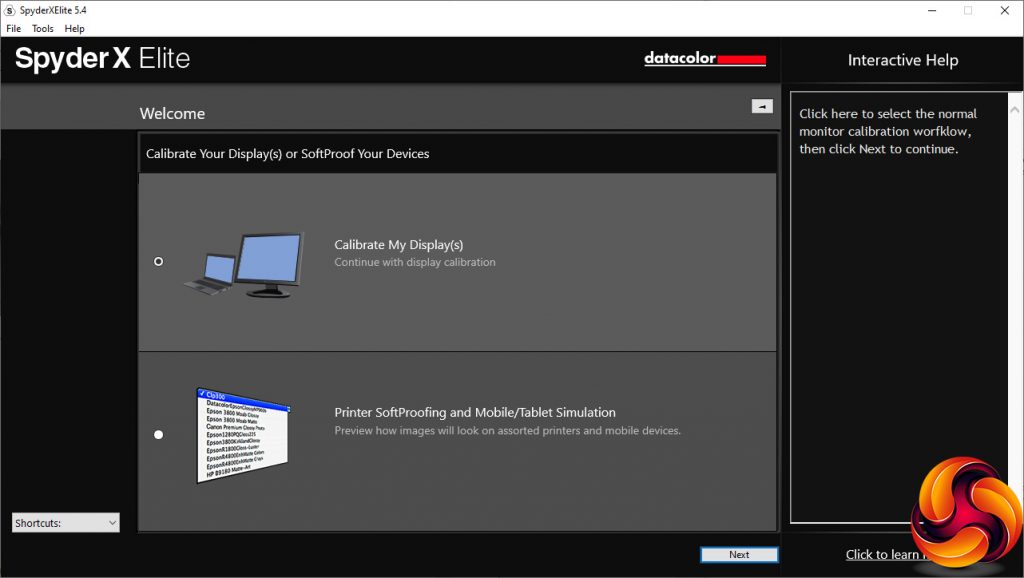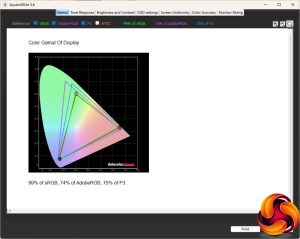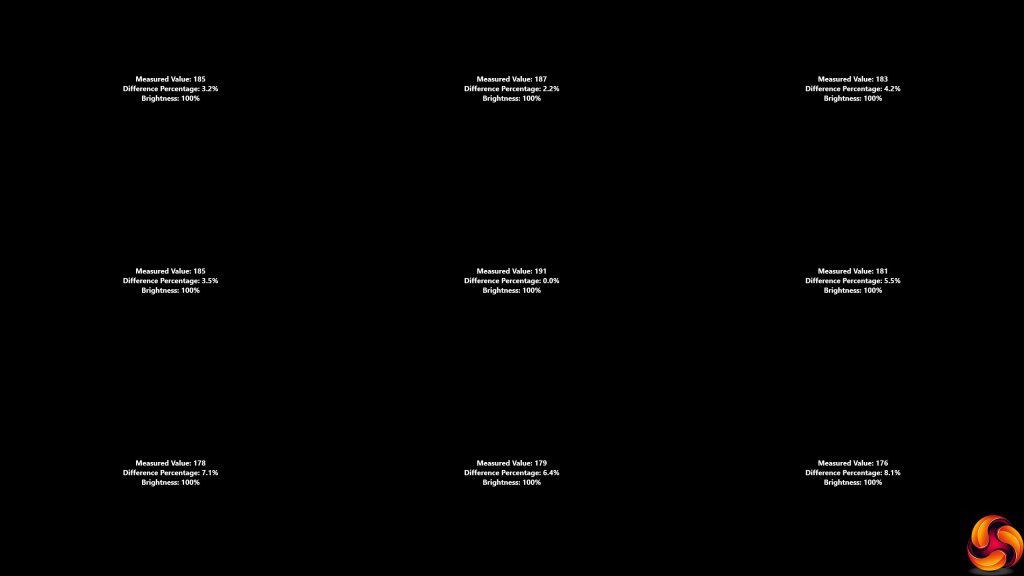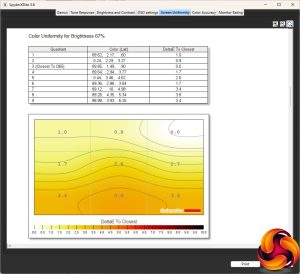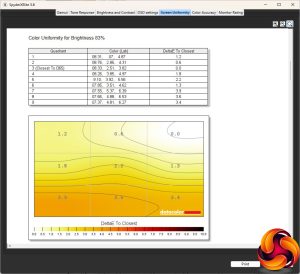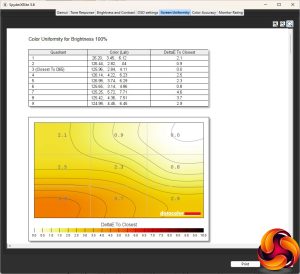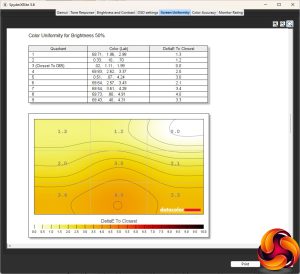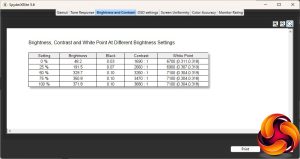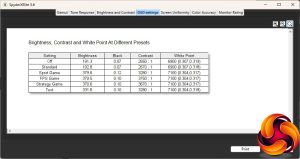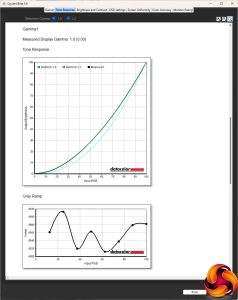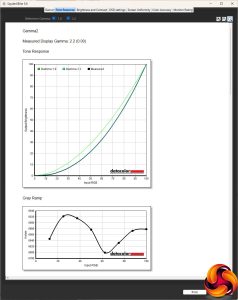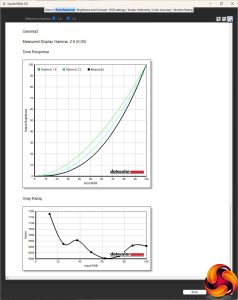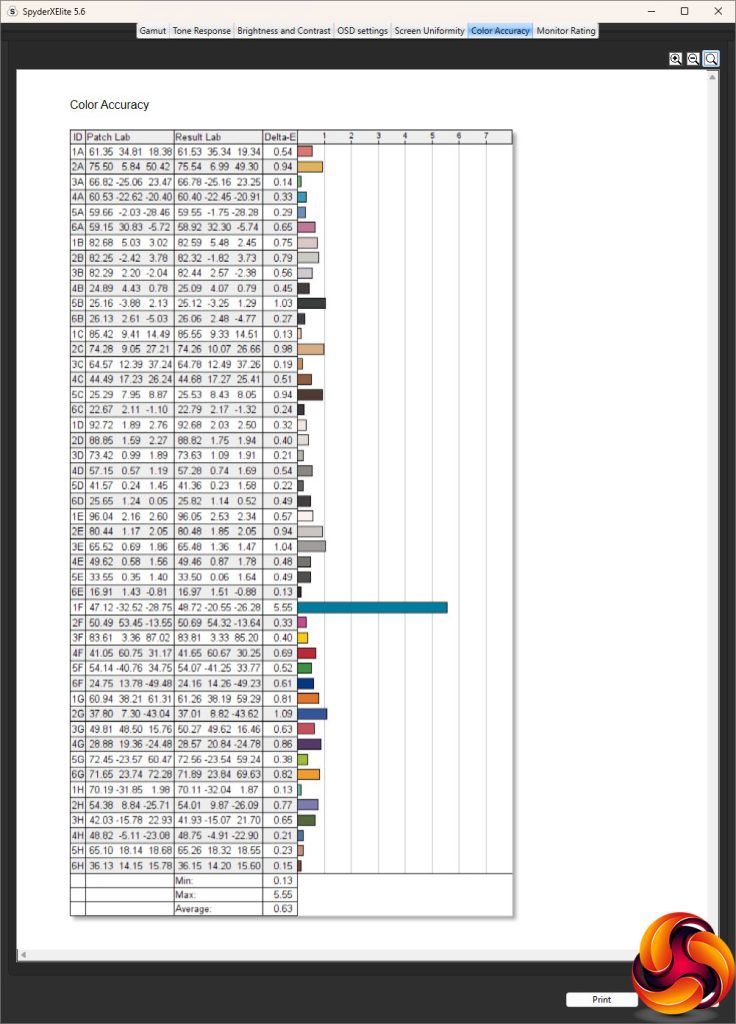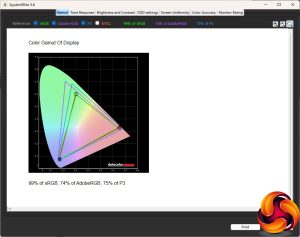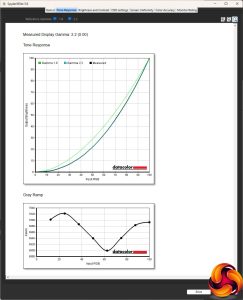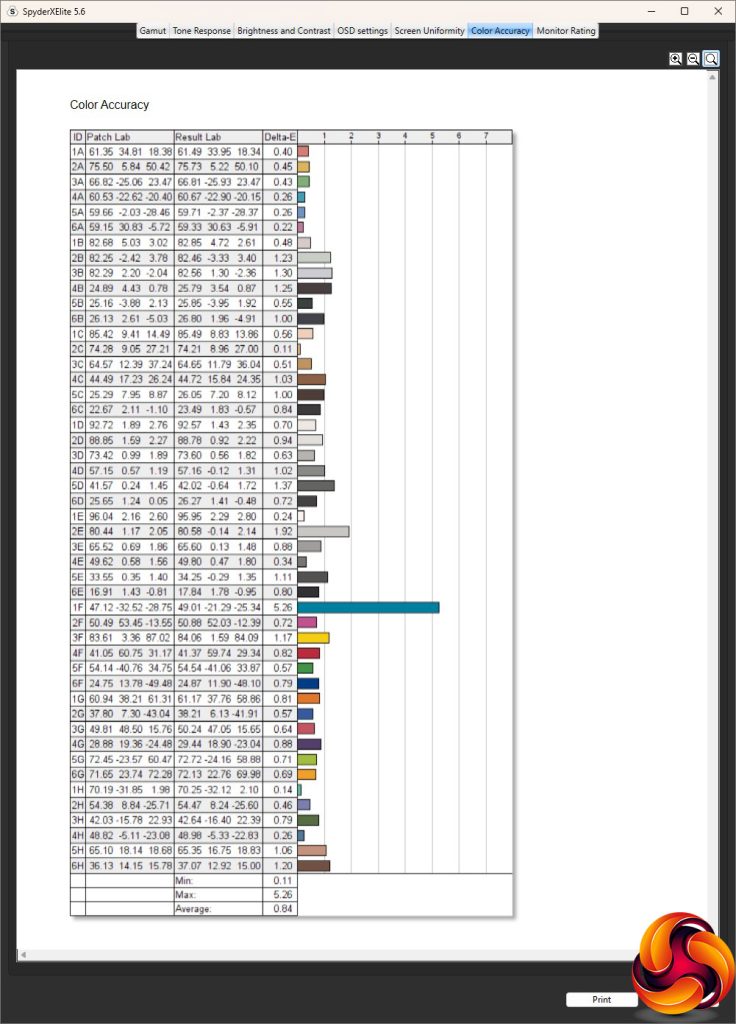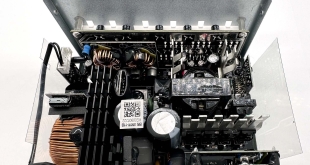Our main test involves using a DataColor SpyderX Colorimeter to assess a display’s image quality. The device sits on top of the screen while the software generates colour tones and patterns, which it compares against predetermined values to work out how accurate the screen is.
The results show –
- A monitor’s maximum brightness in candelas or cd/m2 at various levels set in the OSD.
- A monitor’s contrast ratio at various brightness levels in the OSD.
- The brightness deviation across the panel.
- The black and white points.
- The colour accuracy, expressed as a Delta E ratio, with a result under 3 being fine for normal use, and under 2 being great for colour-accurate design work.
- The exact gamma levels, with a comparison against preset settings in the OSD.
We first run this test with the display in its default, out-of-the-box state, with all settings on default. We then calibrate the screen using the Spyder software and run the test again.
We always test the display subjectively on the Windows desktop, using it for general tasks such as browsing and word processing, and with games as well, even if the display is not intended solely for that purpose.
We pay careful attention to any artefacts, ghosting or motion blur, and enable any gaming-specific features, such as adaptive-sync settings like G-Sync or FreeSync, using a compatible graphics card in our test PC.
We performed the quality tests on the iiyama G-Master GCB3280QSU-B1 at its native 2,560 x 1,440 resolution in the default mode, after resetting the OSD. Our test system was equipped with an AMD Radeon Vega Frontier Edition graphics card, which supports FreeSync.
The GCB3280QSU-B1 delivered mediocre gamut readings, with sRGB of 99 per cent, 74 per cent AdobeRGB and 75 per cent P3.
The brightness distribution is more promising, with no part of the screen going beyond 8.1 per cent deviation and most areas much lower.
Colour uniformity is also pretty good. The screen defaults to 25% brightness so will be even more uniform if left at this level.
The GCB3280QSU-B1 actually hits its brightness specification at 75 per cent, going to 371.8cd/m2 at 100 per cent. That's still not hugely bright, but not a drawback. The contrast ranges from 1,690:1 to an incredible 3,680:1, but we expect strengths in this area from VA panel technology. The white point varies a bit from 6700K at 0 per cent to 7100K at 50 per cent brightness or above.
The I-Style Color presets don't vary greatly, and you can't even use them if you turn on Direct Drive Mode low input lag. Off and Standard mode are the same by default, with 191-193cd/m2 brightness, around 2650:1 contrast, and a 6900K white point. All the other presets offer a slightly cooler 7100K white point. Sport Game and FPS Game bump up the brightness to full with 379.5cd/m2, but Sport Game uses a slightly lower 3,280:1 contrast while FPS Game is the highest at 3,750:1.
The Strategy Game preset drops the brightness slightly to 370.6cd/m2 but with a still high 3,670:1 contrast. Text mode, presumably aimed at reading things onscreen, still has a high 331.6cd/m2 brightness and 3,280:1 contrast. This type of mode is usually not so bright. Strangely, there aren't any presets for movie watching or general productivity – both of which you are still likely to do, even on a screen aimed primarily at gaming.
The three Gamma options are perfectly spaced, ranging from 1.8 to 2.6. The default is 2.2, which is exactly what we would expect.
The colour accuracy is superb out of the box, with a 0.63 average deviation. Only one blue shade appeared to be dramatically deviant. But as always, we fired up the SpyderX again to see if calibration could improve things any further. The only adjustment suggested during the process was dropping the brightness level by 1 per cent.
The gamut is almost never changed by calibration, and this is true for the GCB3280QSU-B1.
Likewise, the default Gamma 2 option remained the same at 2.2.
Most importantly, colour accuracy had got slightly worse with an average deviation of 0.84. That's still great, but shows this panel has been well calibrated out of the factory and there's not much point trying to improve on things yourself.
We also tried a few games, movie watching and general productivity with the GCB3280QSU-B1, making use of presets where appropriate. We tried FPS Game with Rainbow 6: Siege and CS2. With the latter being very light on 3D processing compared to recent AAA titles, it's a good test of how a monitor copes with very high framerates, and this one did very well indeed. The FreeSync Premium adaptive sync provided smooth, jitter- and tear-free refreshing. We also tried LOL with the Strategy Game setting. The huge area of this screen made it ideal for RTS-style map viewing. The curvature was immersive and made movie watching a pleasure, despite the lack of a specific preset for this.
 KitGuru KitGuru.net – Tech News | Hardware News | Hardware Reviews | IOS | Mobile | Gaming | Graphics Cards
KitGuru KitGuru.net – Tech News | Hardware News | Hardware Reviews | IOS | Mobile | Gaming | Graphics Cards



